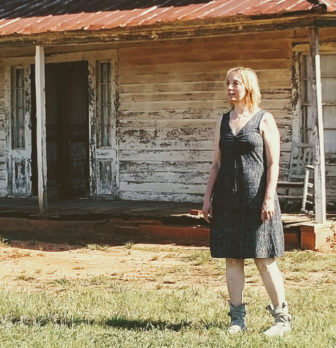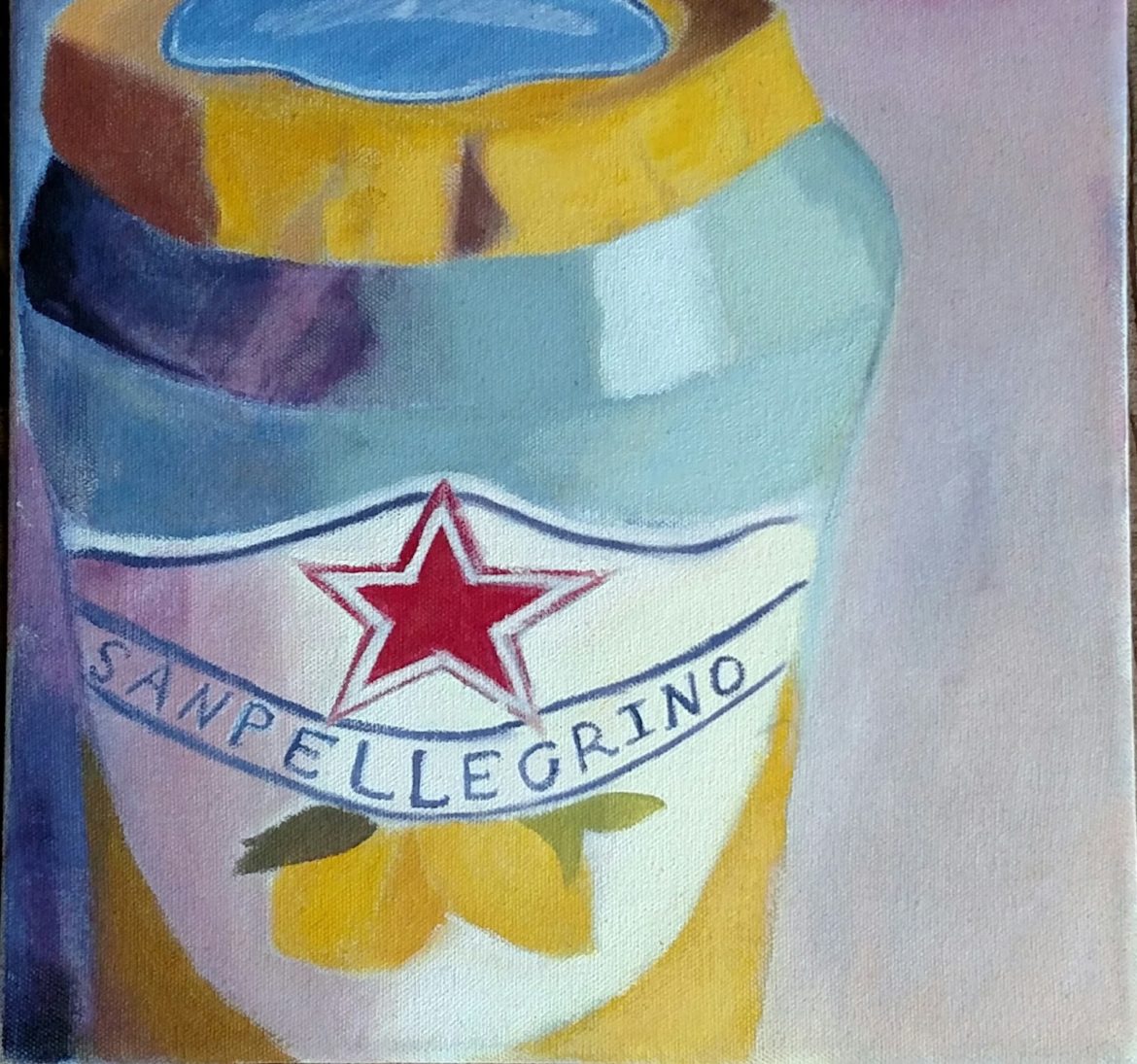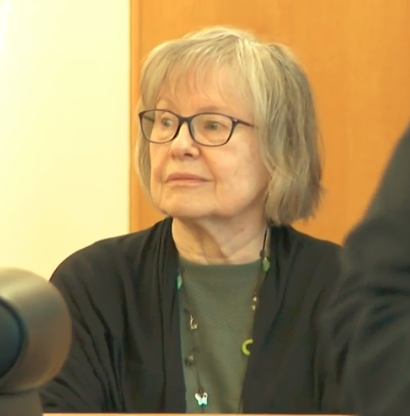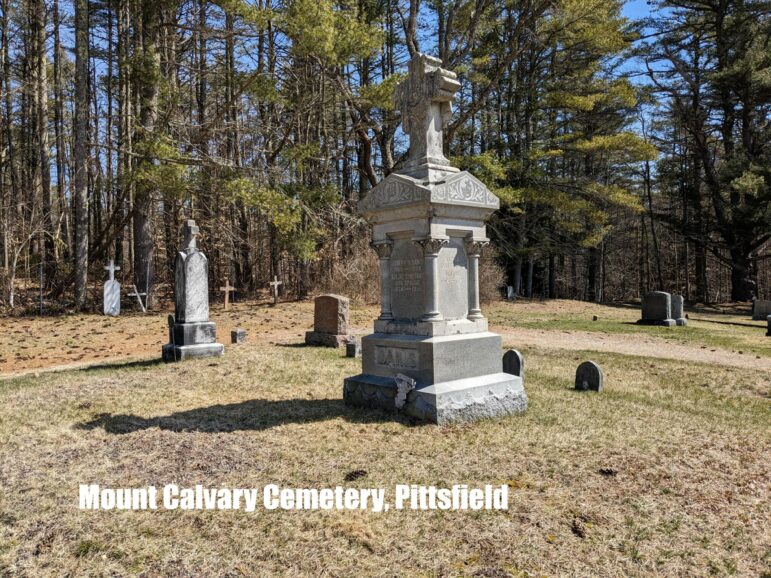Carolyn Hutton’s column “Dappled Things: How To Live in the In Between” runs in InDepthNH.org every Sunday.
By Carolyn Hutton
When the kids were little, we took them more or less everywhere. I could not afford a babysitter—neither did I really want to be away from them all that much, so if we weren’t home, which was most of the time, they went places I went. There were a few things I carried in my bag in those days: baby wipes, a zip lock bag of Cheerios; a bundle of crayons; and always, blank paper.
The paper was for drawing, and they always drew because you can do that anywhere. They drew things they were looking at—trees, flowers in a field; they drew things they made up; Vikings in ships, monsters, princesses; sometimes the drawings disturbed me, like the time my son drew F-16 fighter planes dropping bombs on the margin of a church bulletin.
Likely they would have liked computer toys to play with—maybe I would have given in if we had had the money. But I hope not because whereas a computer game offers a distraction from surroundings, blank paper is a medium that offers tremendous choice. You can be engaged with the world around you—draw (or write) something you actually see—but you can also NOT be engaged with the world around you if that is what you choose, and you can be in the grimmest of dentist’s offices waiting for the most unhappy tooth filling and you can draw dragons and knights that slay them. Either way, blank paper—like the blank appointment books I love so much—is an invitation to express yourself in one way or another, to make your particular connection with the world.
And it’s cheap.

Carolyn Hutton is pictured at a home near where she grew up in North Carolina.
I am thinking a lot about “cheap entertainment” these days of living on the salary of my part-time jobs. I always love to read about these things; I admire women adept with glue guns and sewing machines and who write about crafty living, as I am also about the most un-crafty woman I know.
It would help if I were more so. But I still remember the pair of pants I had to make in Home Economics, pleated corduroy trousers 1980 style. We had to wear them to school to “model” when we were finished. Some girls looked like they stepped right out of Co-ed magazine that day. But my pale tan pants were cut the wrong way, hemmed way too high, and the stylish pleats stuck out in bunches on the widest part of my hips.
I looked like a Canadian Mounty and I had to just get through the day like that at seventeen. I did make a crib bumper and some solar system pillow cases when the children were small, but that is about the extent of my sewing ability—or, I have to confess, desire. And I came from a mother who designed doll clothes out of leaves as a child and sewed her own wedding dress as well as mine and my sister’s, who used to go to thrift stores and hold up a dress and think about how she could remake it. Remaking never occurs to me, except maybe mending a hole with masking tape and a sharpie the same color as the dress.
But really for my mother—skilled enough to be a fashion designer in another life—there was the joy of creating something that wasn’t there before. And that is what we have in common.
A lot of “cheap entertainment” comes from that very joy of creating something. Yesterday my music partner was talking about this, about how musicians create their own entertainment. If you are lucky, you get paid for this. But all you really need is a friend or two, a couple of instruments and a groove and you can play all night.
Food and drink help, of course, but you don’t need anything more. You certainly don’t need much money. Besides the old upright piano we kids grew up with, My first musical instrument was a 1 dollar white plastic recorder. I remember being in college on a trip to Myrtle Beach with a campus group when a girl named Betsy pulled a recorder out of her backpack and began to play it. I was astonished at how beautifully she played, how small the recorder was, how she could take it anywhere. So I bought one and began to learn to play it. I will always be thankful to that girl for inspiring me in that way.
Later my first guitar was borrowed, then someone sold me one for $75. Even if you are broke, instruments have a way of coming to you if you want them deeply enough.
This is one thing I think; it may be that a lot of money gets spent out of boredom, out of a deep desire to be entertained. But I think we were meant to create. If you make something—pictures, dresses, furniture, music, gatherings, anything—you can be pretty content in your life.
One summer, a year after I had graduated from college, I lived in the little hill town of Comerio, Puerto Rico. I wanted to live with a family who just spoke Spanish, and I became part of the household of Tata and Louis and their three children. The house was small and the roof was not complete. At night we draped ourselves in netting so we could sleep in peace from mosquitoes. There was running water only a couple hours at a time and never hot water. But there were always people there. In the morning neighbors gathered for the café con leche that Tata boiled in pot using a sock for a coffee filter.
At noon she cooked rice and beans for the men who came to work on the roof, for the old man down the road, for the young single mother, for anyone who wandered in. There was not a table. People sat wherever they could, balancing their plates on their laps and always talking.
Sometimes there was a party at night, a big pot of tripe and green bananas stewing on a fire outside in the yard and neighbors gathering. I remember two teenage brothers who appeared one night and sang in dead-on harmony with one old guitar. I will never forget that.
What Tata created, besides all that beautiful food, was community. She didn’t have any money to work with, but she had everything she needed.
As a girl, I was in love with Thoreau. I had a small copy of Walden that I read from all the time, and I had romantic notions of finding some version of Henry David one day, stumbling through the woods, smoking a pipe and staring into space. It is likely a good thing I was spared actually encountering a man like this because I would likely have followed him anywhere. But in Walden Thoreau said many things I love and one is this:
“I had three chairs in my house; one for solitude, two for friendship, three for society.
Another thing Thoreau had, of course, was blank paper. Walden Pond, whether it is loved or dismissed as a treatise to simple living, is a book about how to live in the world as somebody who notices things and people-—about how you can be someone who witnesses a New England forest in early spring alone with a notebook yet who invites a friend to sit, or calls in everybody for a party in the smallest of houses.
So in this all-over-the place blog today I guess I am thinking about what creates meaning in our lives. I am thinking about the connection between blank paper and groups of people sitting together and I guess it is about how we have this treasure—this creative fire that can ignite when we are open to what—and who—is around us.
(Painting by Rosalind Hutton who always notices things…)
Caroyln Hutton is an English teacher. When she was in 5th grade, she read “Harriet the Spy” and loved Harriet so much that she started keeping a notebook that got her into as much trouble as it got Harriet in because she always told the truth in her notebooks. But she never stopped writing. A native of North Carolina, Carolyn is also a musician and plays bluegrass and old time music with Drowned Valley and the duo Long Journey. She lives with her husband, Rod, in Madbury where their four grown children sometimes visit.





